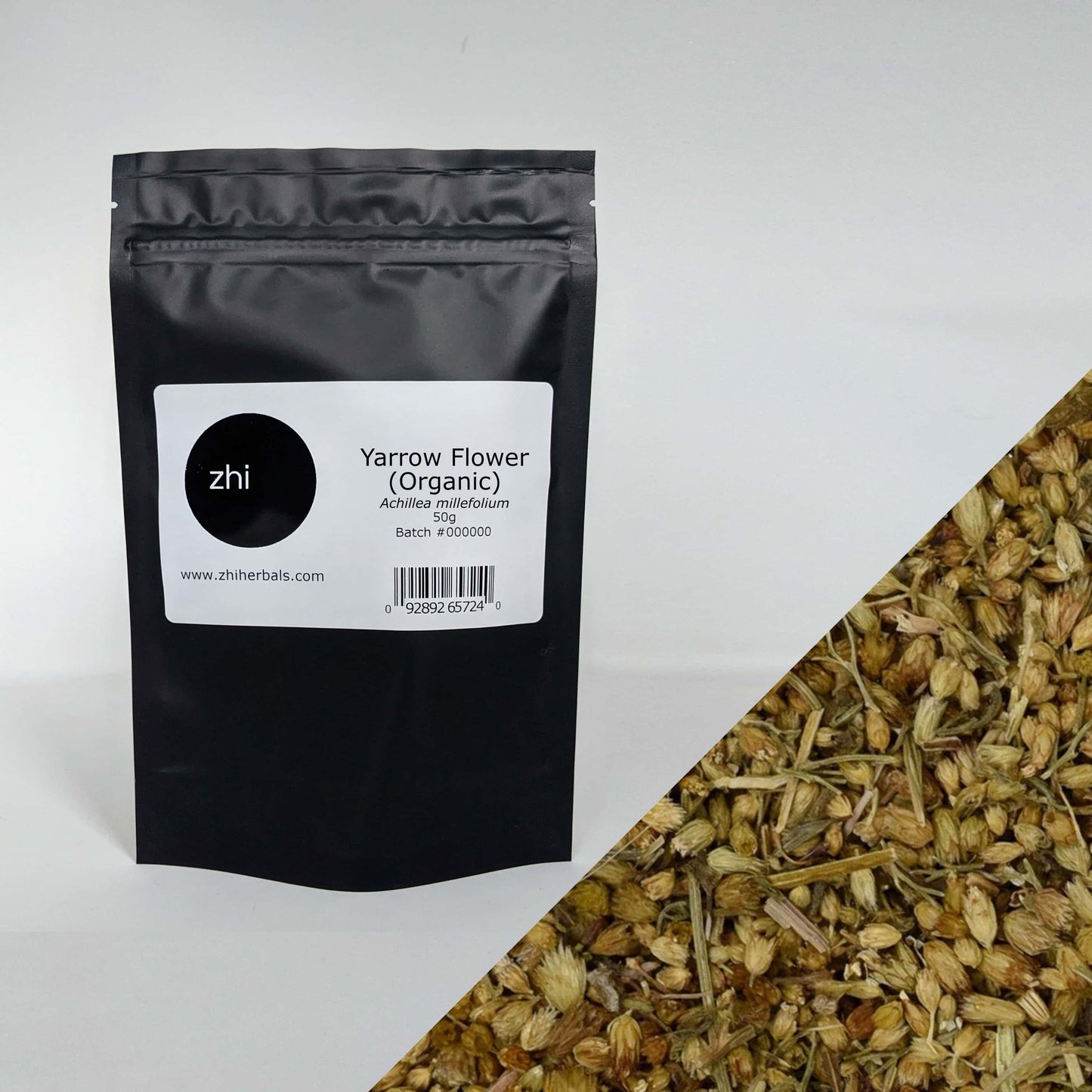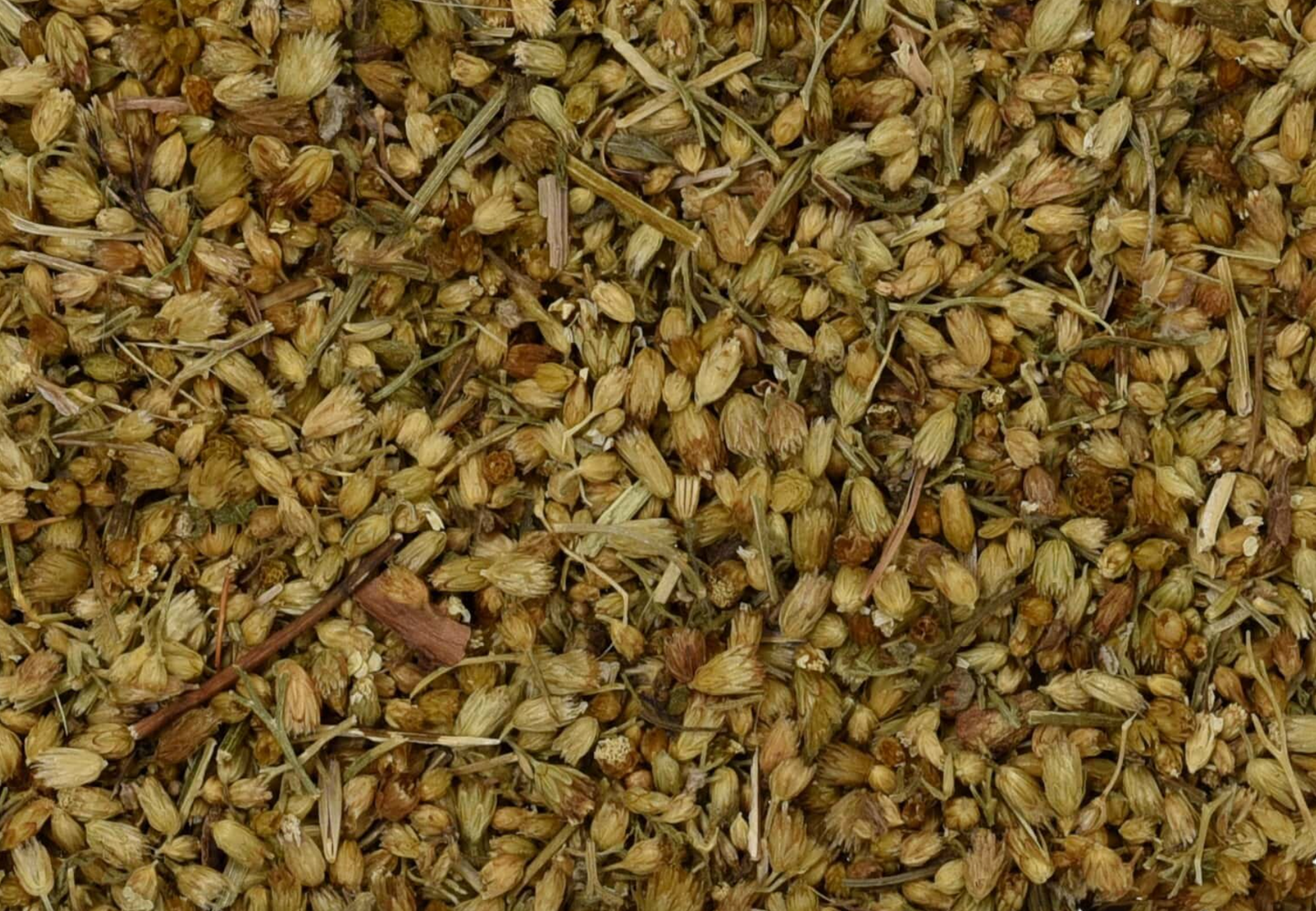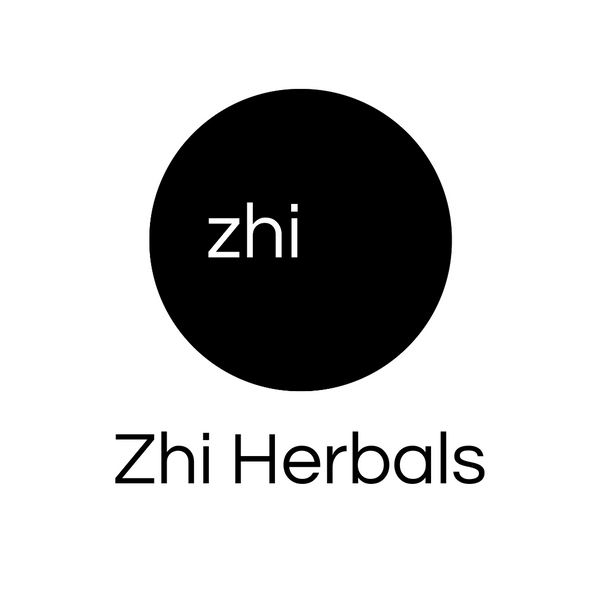Zhi Herbals
Yarrow Flower (Organic)
Yarrow Flower (Organic)
Couldn't load pickup availability
Common Name
Yarrow
Latin Name
Achillea millefolium
Origin
Croatia
What Is Yarrow?
Yarrow is best known as an herbal remedy for wound healing, however, it is also often used for inadequate circulation, infections, and more. Yarrow grows in many temperate climates throughout the world.
How to Use Yarrow (Common Uses)
Yarrow works well both on its own and when combined with other herbs. It can be taken internally as a tea, powder, capsules, or extract. Yarrow is also a popular herb for topical use. Visit our herbal blog for more inspiration on how to use yarrow.
Medicinal Uses and Benefits of Yarrow
Yarrow is extremely effective in helping the body to deal with fevers. It increases peripheral circulation, and can be used to lower blood pressure, stimulate digestion, tone blood vessels, relax sore muscles, and reduce hypertension. In addition, it is antibacterial and can be used for urinary tract infections, the healing of wounds, acne, and sore throats.
Active Constituents in Yarrow
Volatile oil, tannins, flavonoids, alkaloids, amino acids, nutrients, coumarins, furanocoumarins, alkamides.
Notable Facts About Yarrow
The Latin name Achillea comes from the Greek demigod Achilles. As a child, Achilles’ mother held him by the ankles and dipped in into the river Styx, to make him invincible. Achilles went on to fight as fierce warrior, and used yarrow to treat the wounds of his fellow soldiers. Achilles eventually died from a wound to his heel, which was the only unprotected part of his anatomy.
Share


Such a great company to order from with excellent products and service. I found the ordering and shipping (free! and quick) a very easy process. So nice, especially since I am out of province. I have ordered a few times and enjoyed my teas. They are very fragrant. On the last batch, I had some questions since it varied from the previous batch. They went above and beyond to make it right and answer my questions. I look forward to ordering my next batch.
good quality product, deliver in time


